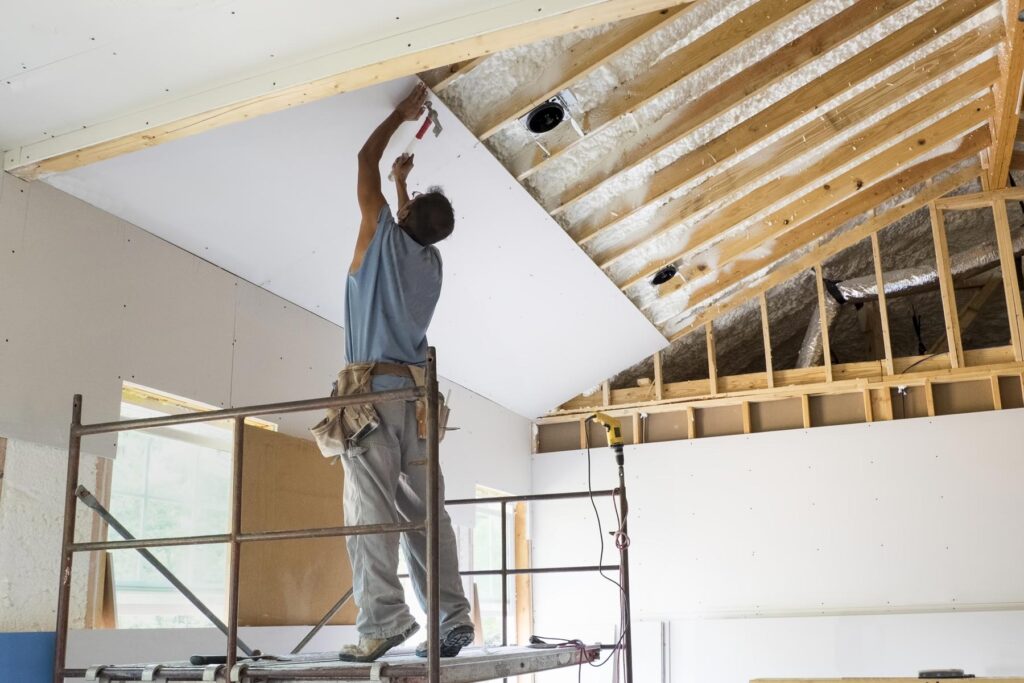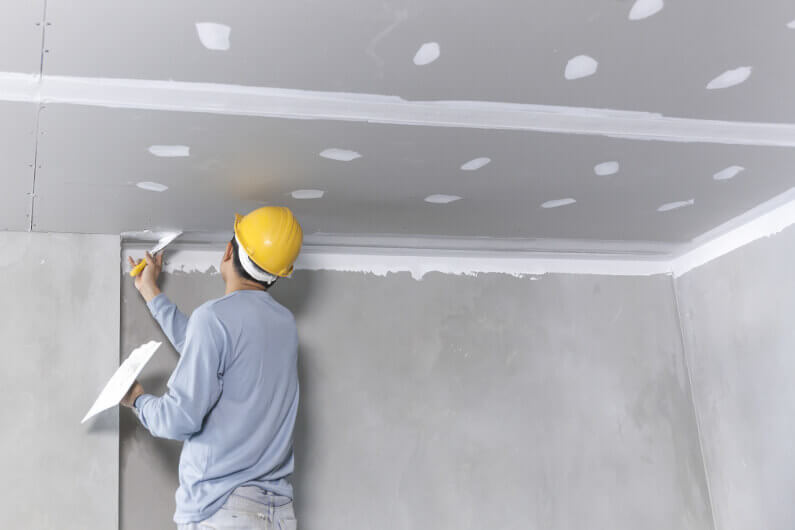Trustworthy Drywall Installation Solutions for each Area
Trustworthy Drywall Installation Solutions for each Area
Blog Article
Drywall Installation Made Easy: Tips for Perfect Outcomes
Drywall setup is often regarded as a difficult job, yet with the appropriate approach and expertise, it can become a manageable venture. Choosing quality products and preparing the installment area are critical first actions that establish the foundation for success. In addition, mastering strategies for cutting, hanging, and finishing drywall can substantially influence the outcome. As we discover these important tips, you might find that also the tiniest changes in your method can result in remarkably enhanced outcomes, leaving you to think about exactly how these techniques can transform your following task.
Selecting the Right Materials
Picking the ideal materials for drywall setup is crucial to attaining a sturdy and cosmetically pleasing finish. drywall repair. The main component, drywall sheets, commonly can be found in different thicknesses, with 1/2-inch sheets being basic for indoor wall surfaces. For locations needing added moisture resistance, such as kitchens or shower rooms, take into consideration utilizing environment-friendly board or cement board, which are specifically created to endure moisture

In addition, selecting the ideal fasteners-- either screws or nails-- is crucial for securing the drywall to the framing. Drywall screws are generally preferred for their holding power and lowered threat of popping. Think about the finishing touches such as guide and paint, which not only boost the look yet likewise safeguard the drywall from wetness and wear.
Preparing the Setup Area
Prior to beginning the drywall installation procedure, it is necessary to prepare the setup location completely. A clean workspace reduces the danger of damage to existing items and allows for effective motion throughout setup.
Following, inspect the walls and ceiling for any kind of blemishes, such as cracks, holes, or mold and mildew. Address these problems in advance; patch any kind of damages and permit sufficient time for repair work to dry. Furthermore, ensure that electric outlets, buttons, and pipes are correctly placed and made up, as this will certainly affect drywall placement.
Think about the environmental conditions. A steady temperature and humidity degree are vital for optimal adhesion and efficiency of the drywall products. If essential, utilize a dehumidifier or heating system to develop ideal problems.
Cutting and Hanging Drywall
The key to reliable drywall installation lies in the accurate cutting and hanging of the panels. Use a straight edge and an energy knife to rack up the Get the facts drywall along your measurements, then break it along the scored line for a tidy break.

Constantly function from the top down and entrusted to right, ensuring that you preserve a staggered pattern to improve security. Properly hanging the drywall sets the foundation for a smooth surface, ultimately leading to exceptional lead to your drywall job.
Taping and Mudding Strategies
While appropriate cutting and hanging of drywall sets the stage, the following critical step involves understanding taping and mudding techniques to make certain a seamless coating. Taping is vital for enhancing joints and protecting against splits; it entails embedding tape right into the applied joint compound (mud) Beginning with a quality fiberglass or paper tape, using the tape over the joint and pushing it right into the damp mud making use of a taping knife, making certain no air bubbles continue to be.
Once the tape remains in area, use a slim layer of joint substance over the tape, feathering the edges to create a smooth transition to the drywall surface. Allow this layer to dry totally prior to sanding it lightly to get rid of flaws. Repeat this procedure, using added layers of mud as required-- typically 2 to 3 coats-- while slowly widening the application area with each layer to attain a seamless look.
After the last coat dries, sand the surface with a fine-grit sandpaper till smooth. drywall contractor. Remember to wear a mask during sanding to avoid inhaling dust fragments. Grasping these taping and mudding strategies is essential for attaining a professional-quality finish in your drywall installment
Ending Up Touches for Excellence
Attaining a remarkable drywall setup exceeds taping and mudding; it finishes in the completing touches that elevate the overall look. These last actions are important in ensuring a professional-grade coating that boosts the aesthetic appeals of your room.
Begin by fining sand the dried joint compound to develop a smooth surface area. Make use of a fine-grit sandpaper and a fining sand block or pole sander for ideal control. Pay particular interest to edges and edges, useful source as these locations have a tendency to require more precise job. After sanding, wipe down the walls with a moist fabric to remove any type of dirt fragments, ensuring a tidy surface area for painting.
Next, use a primer especially developed for drywall. This step is necessary, as it helps secure the joint compound and provides a consistent base for the overcoat. Once the primer dries, inspect for any type of flaws, and retouch as needed.
Verdict
In conclusion, successful drywall installment pivots on the careful choice of products, extensive preparation of the installation location, and specific implementation of reducing and hanging strategies. Proficiency of taping and mudding procedures is important for accomplishing a smooth surface.
Drywall setup is frequently viewed as a challenging task, yet with the right approach and understanding, it can end up being a workable undertaking.Selecting the suitable materials for drywall installation is essential to accomplishing a durable and visually pleasing coating.Prior to beginning the drywall setup procedure, it is vital to prepare the installment area thoroughly. Mastering these taping and mudding methods is important for attaining a professional-quality coating in your drywall installation.
In final thought, effective drywall installment pivots on the cautious option of materials, comprehensive prep work of the installation area, and specific execution of cutting and hanging techniques.
Report this page